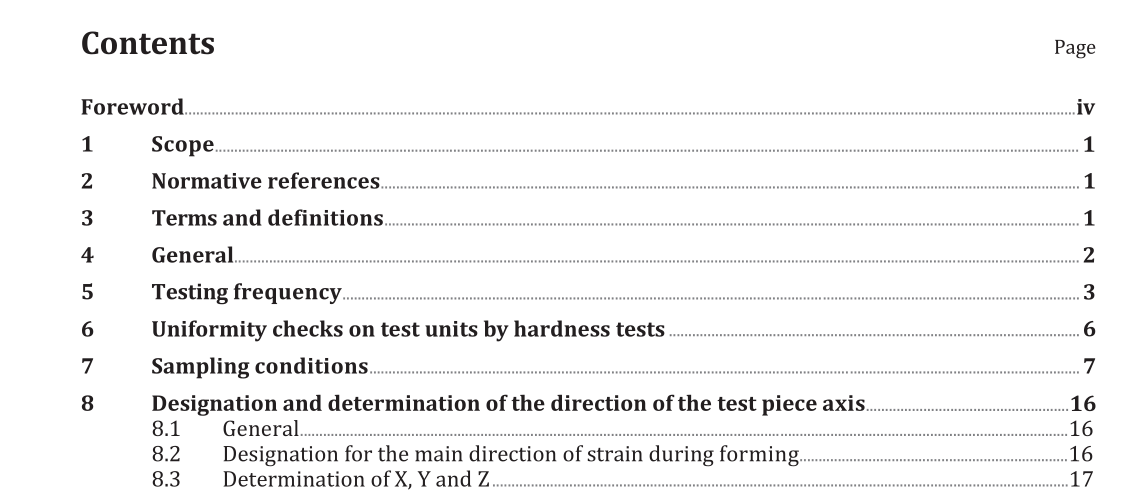BS ISO 15461:2018 pdf download.Steel forgings — Testing frequency, sampling conditions and test methods for mechanical tests
1 Scope
This document gives guidelines for the simplification and harmonization of the specifications for mechanical testing of open die and closed die forgings in International Standards and other technical delivery conditions for forgings of steel.
This document
a) offers various options for
1) the frequency of testing, and
2) sampling conditions,
b) introduces a designation system for the options, mentioned under (a), and
c) specifies the test methods for
1) room temperature tensile tests,
2) elevated temperature tensile tests,
3) impact tests, and
4) uniformity checks by hardness tests.
2 Normative references
The following documents are referred to in the text in such a way that some or all of their content constitutes requirements of this document. For dated references, only the edition cited applies. For undated references, the latest edition of the referenced document (including any amendments) applies.
ISO 148-1, Metallic materials — Charpy pendulum impact test — Part 1: Test method
ISO 377:2017, Steel and steel products — Location and preparation of samples and test pieces for mechanical testing
ISO 404, Steel and steel products — General technical delivery requirements
ISO 3785, Metallic materials — Designation of test specimen axes in relation to product texture
ISO 6892-1, Metallic materials — Tensile testing — Part 1: Method of test at room temperature
ISO 6892-2, Metallic materials — Tensile testing at elevated temperature — Part 2: Method of test at elevated temperature
3 Terms and definitions
For the purposes of this document, the following terms and definitions apply.
ISO and IEC maintain terminological databases for use in standardization at the following addresses:
— IEC Electropedia: available at https://www.electropedia.org/
5.1.1 The product standard or order shall specify, by reference to the appropriate symbol(s) in Table 1,column 1, the following:
a) the composition of the test unit as defined in Table 1, columns 2 to 8;
b) whether uniformity checks by hardness tests in accordance with Table 1, column 9 are required and, if so, the percentage of products to be subjected to the hardness tests;
c) the number of sample products to be taken from the test unit. (See the explanations in Table 1,footnote a , for replacing the letter “n” of the symbol by the mass of the test unit up to which the taking of one sample product is sufficient.)
NOTE Less stringent requirements for the composition of the test unit can be compensated by more stringent requirements for the number of sample products to be tested. Therefore, for example, a test unit characterized by the symbol CH5 can be regarded as equivalent to a test unit characterized by the symbol CHD10 or CFHD15 and the test unit CU100 can be regarded as equivalent with CFHDU10. Consequently, it seems possible and reasonable to specify in the product standards or orders not only one distinct test unit, but to leave various equivalent test units to the choice of the manufacturer or to an agreement at the time of enquiry and order, as shown in the example in Table A.1, column 5.
BS ISO 15461:2018 pdf download
